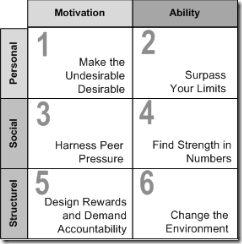This article was originally published in February 2020. It was updated in June 2023.
The work we do here at Results involves transformational change. In fact, you might call us change agents. Our clients want to improve their strategic thinking, succession plans, innovation portfolios, talent management processes, and a variety of other systems to unleash the potential of their organizations. These all require some type of fundamental change in their businesses, and in all cases once a decision is made and a direction set, they must implement the next phase – execution.
Some change projects follow established processes. In my years with a multi-national telecommunications manufacturer, I followed a well-established and documented process for introducing new products. The product concept would move through ‘gates’ passing from marketing to product line management, and then to engineering, design and finally manufacturing. Typically this involved hundreds of people and aligned all communication, training and dependent systems prior to launch. And if a product idea didn’t meet all the criteria to pass a gate, more work would need to be done or the project was cancelled.
This is an example of a change process with a lot of certainty and few surprises. But most changes in organizations are not as certain; they involve something that’s never been done before with no established process to follow.
What do we do when we want to implement a change, and we don’t have a process to follow?
The Influencer Model
In 2013, Joseph Grenny and his colleagues at VitalSmarts released the book, Influencer: The New Science of Leading Change. With a strong focus on the people aspects of change, it introduces a 6-part model for helping to successfully execute changes in organizations.
The Influencer approach begins by first defining the vital behaviors ; those things we’d like to see people doing differently after the change. For any change project, your change management communication plan must be well thought out. Leaders must begin with crystal clarity of the desired behaviors after the project.
From there, the change management model poses the question, “OK, so if we want people to behave that way, what inputs are required?” The simple answer is that people need both motivation and ability, and within each of these categories there are three elements or action sets that can be put in place as follows:

- Creating Motivation for Change
- Make the Undesirable Desirable – clearly communicate your plan. Really paint a picture of the ‘why’. Define why the change is necessary, the desired outcomes, and how things will be better for the organization AND for individuals personally in the future.
- Harness Peer Pressure – look for ways to make visible how others in the organization, including your management team, are embracing the new realities, or at least progressing towards it. No one wants to be left behind.
- Design Rewards and Demand Accountability – find creative ways to design rewards as people adopt new behaviors and learn, while at the same time keeping score and holding individuals accountable to their own progress.
- Creating Ability to Change
- Surpass your Limits – over invest in learning to ensure everyone has the knowledge and skills to operate in the new way.
- Find Strength in Numbers – create a support system for people to learn and grow. Make it OK to fail if failure is a step towards developing the new behavior.
- Change the Environment – add resources, tools, and job aids that remind, direct and support people to operate in the new way.
Example of A Change Management Plan: Our Experience Here at Results

In the spring of 2019 we chose to change our CRM and Digital Marketing platforms from Salesforce (and various other tools) to Hubspot. This was a major project involving data migration from several disparate systems into one, new ways of doing things (process design), implementing user training plans and adoption tracking.
Our goal was that following implementation, these would be the vital behaviors that would exist in the organization:
- Every team member logging all communication with customers in Hubspot – calls, meetings, emails
- Every team member using Hubspot to schedule future activities:
- Who to invite to events
- What next steps do we have (and when) with leads, prospects and opportunities (deals) in the sales pipeline to advance them
- Managers using reporting from Hubspot to assess performance and to hold people accountable
Armed with this prework, we were then able to create a change project with the following elements using the Influencer Model:
|
Motivation |
Ability |
|
|
Personal |
A formal kickoff meeting explained the benefits to the company and user, namely ease of use and saving time. Established reporting within the new system to make it easier for managers to track their employee’s performance to scorecard targets. |
Made the Hubspot Academy tools available to all users with videos, exercises and progress tracking. Established a regular Hubspot Learning session where users would come together to forum regularly and discuss successes and challenges. This rhythm continues today. |
|
Social |
Launched the Results Hubspot Games as a fun competition to see who could learn fastest. Adjusted the weekly meeting rhythm agenda to include roundtable sharing of learnings over the past week. |
Launched an internal social-media channel where users could post learning, achievements and questions to the group. |
|
Structural |
Tied a small reward for the winner of the Hubspot Games contest to be determined after 30 days. Assigned an ‘accountability buddy’ for every user to ensure partner progress. |
Set a formal cut over date and removed access to the previous tools so that users had to do things the new way. Status quo was not an option. |
Was this a perfectly executed change project? Of course not, but I’m certain that if we had not used this change management project plan and implemented the change, we would have had far less success and be much further behind than we are now. Today, a couple of years on, we are seeing the outcomes of a successful change management plan. We continue to have vital behaviours demonstrated consistently and have begun to further utilize the feature set of our new technology platform.
Comment below: What are your experiences with change projects, both successes and failures?
Article by Tim O’Connor



 ,
,
